ENERGY RESOURCES
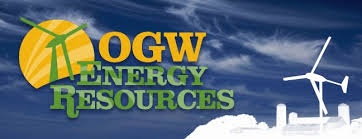
Coal, Oil and Natural Gas are the most important remnant fuels. They give out 88% of the world’s yearly energy. Such use of energy on a large level means that one day we will run short of these energy resources. Therefore, we should expand other ways to manufacture energy. Some other methods of obtaining energy and fossil fuel energy methods are as follows:-

HYDRO ELECTRIC POWER. We use a diversity of electric instruments today. Lamps, heaters, fans, refrigerators, TVs, computers and Air Conditioners are some of them. They all run by electricity. This electricity is mainly fashioned through Dams. Dams are large reservoirs of water built across rivers. They ensure a continuous supply of flowing water. This flowing water spins a turbine in an electric generator. The spinning turbine produces electricity. In this way, the kinetic energy of moving water is converted into electricity. It is then transmitted to our homes, offices, markets, factories, etc. through wires and cables. In Pakistan, we have 15 dams (almost). They are not enough to meet our needs of electricity. Therefore, we should build more and more dams. We use these dams for irrigating land also.
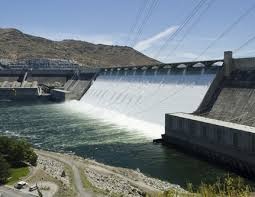
NUCLEAR POWER. This is another source of energy that may help replace fossil fuels. When the nucleus of an atom is split in a nuclear reactor, a large amount of energy is produced. This splitting of atom is called Nuclear Fission. When the nucleus is split, the heat energy given off can be used to convert water into steam. The steam is then sent through a turbine. The turbine moves and electric energy is produced. It is the most powerful source of energy. But, there are many problems with this method of making of energy. The main problem is the nuclear wastes produced during fission process. There is no safe way of storing this waste. Another danger of nuclear power is that rays may be free if there is an accident in the nuclear power plant, which causes diseases like cancer and leukaemia.

THERMAL POWER. Heat energy is called thermal energy. This can be changed into electrical energy. In thermal power stations, water is heated by burning coal, natural gas and oil. This turns the water in steam. This steam, in turn, moves the turbine which drives the electric generator. Thus electricity is produced. This is the most widely used method of producing electricity. This method of power production causes much pollution. The smoke from burning coal, natural gas, and oil are released in air. They cause diverse diseases and environmental pollution. This kind of pollution even effects other living organisms like plants.
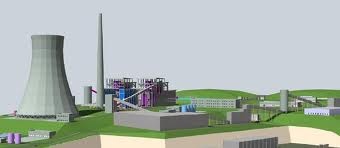
SOLAR POWER. One possible alternate energy source is Solar energy. Solar energy is energy from the sun. it is non-polluting and unlimited. Solar heating of buildings can reduce the amount of fossil fuels used. Large solar panels located on the roofs of buildings can convert the sun’s energy into heat to warm the building and provide hot water. Another way of using solar energy is through the solar cell. Solar cells transform light energy directly into electricity. But these cells are expensive and produce only small amounts of electricity.
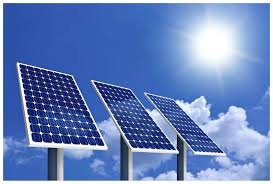
WIND POWER. Just as moving water can spin a turbine, so can moving air, or wind, this is done by the use of wind turbines. Modern wind turbines are an improved form of windmills. They have a turbine wheel attached to metal vanes. These metal vanes work like the propellers on a ship. When the wind blows, the kinetic energy of the wind moves the metal vanes. The metal vans are attached to the turbine. The turbines deive generators to produce electricity. This is a pollution free method. It produces no diseases as nuclear plants do. Unlikes thermal plants, it does not create environmental pollution either.

GEOTHERMAL POWER. Geothermal power is a source of energy that can only be produced in countries with active volcanic features. In volcanic areas, there are super-heated rocks within the earth. We drill wells into the ground to the super-heated rocks. The water is pumped into the ground to these rocks. Water comes in contact with the heated rocks and becomes steam. The steam is used to run steam turbine which generates electricity. This is a non-polluting method of producing electricity. But it can only be used in the countries with active volcanic features.
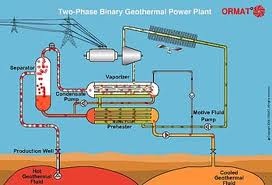
WAVE & TIDAL POWER. Each day, the waters of the oceans rise and fall with the tides. We build dams on the coastal areas. When the sea level is rising, the water is stored in dam. Later, the sluice, or the sliding gate of the dam, is closed. When the sea level drops, the sluice is opened. This moving water spins the turbine, and tidal power station produces energy. Both wave & tidal energy are renewable sources of power, like wind and solar power; they do not create environmental pollution.
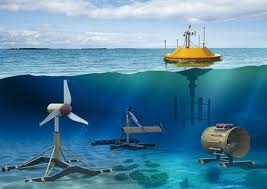
However, this source can produce only a limited amount of energy. Only countries with seashores can use this method. The wave and tidal plants are very expensive and costly to maintain. The salt water near the plant has corrosive effect on the metallic parts of the plant.

Written By:
Sharafat Sheikh
Blogger: FilmAnnex.



